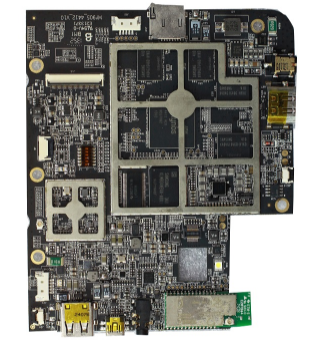Know the introduction of SMT surface assembly inspection process? SMT is a rather complex integrated system engineering technology with high speed and high precision. In order to achieve high throughput and high reliability quality goals, we must control from PCB design, components, materials and processes, equipment, rules and regulations.
SMT
Among them, prevention-based process control is particularly suitable for SMT. In each "step manufacturing process" of SMT, it is very important to prevent various defects and unqualified hidden dangers from flowing into the next process through effective detection methods. Therefore, "detection" is also an indispensable and important means in process control.
SMT testing includes entry inspection, process inspection and surface assembly board inspection, anti-static gloves and PU coated gloves. PCBA is currently the most popular technology and process in the electronics assembly industry. It is a kind of surface assembly components that are packaged in a matrix arrangement with no leads or short leads or balls to be mounted on the surface of a printed circuit board or other substrates. Circuit assembly technology in which reflow soldering or dip soldering is used to solder and assemble.

The quality problems found in the process inspection can be corrected by rework. In the process of electronic printing production, PCBA proofing is the process of using photographic methods or electronic color separation machines to make and properly trimmed negatives, and print them into proofs before electronic printing or use other methods to show the effect of plate making.
At present, one of the most popular technologies and processes in the electronics assembly industry is to mount surface mount components with no leads or short leads or balls in a matrix arrangement package on the surface of a printed circuit board or other substrates. Circuit assembly technology in which reflow soldering or dip soldering is used for soldering and assembly. The rework cost of unqualified products found in the incoming inspection, solder paste printing and pre-welding inspection is relatively low, and the impact on the reliability of electronic products is relatively small.
However, the rework of unqualified products after soldering is very different, because rework after soldering requires PCB re-soldering after desoldering, in addition to working time, materials and possible damage to components and printed boards. Because some components are irreversible, such as Flip chips that require underfill, and .BG
Answer: After the CSP is repaired, it is necessary to restart the ball. Repairing embedded technology and multi-chip stacking is more difficult. Therefore, anti-static gloves and PU coated gloves must be worn when the rework loss after welding is large. It can be seen that process inspections, especially the first few process inspections, can reduce the defect rate and scrap rate, reduce rework and repair costs, and can prevent quality hazards from the source as soon as possible through defect analysis.
The final inspection of the surface mount board is equally important. How to ensure the delivery of qualified and reliable products to users is the key to winning market competition. There are many items to be tested, including visual inspection, component location, model, polarity inspection, solder joint inspection, electrical performance and reliability testing.